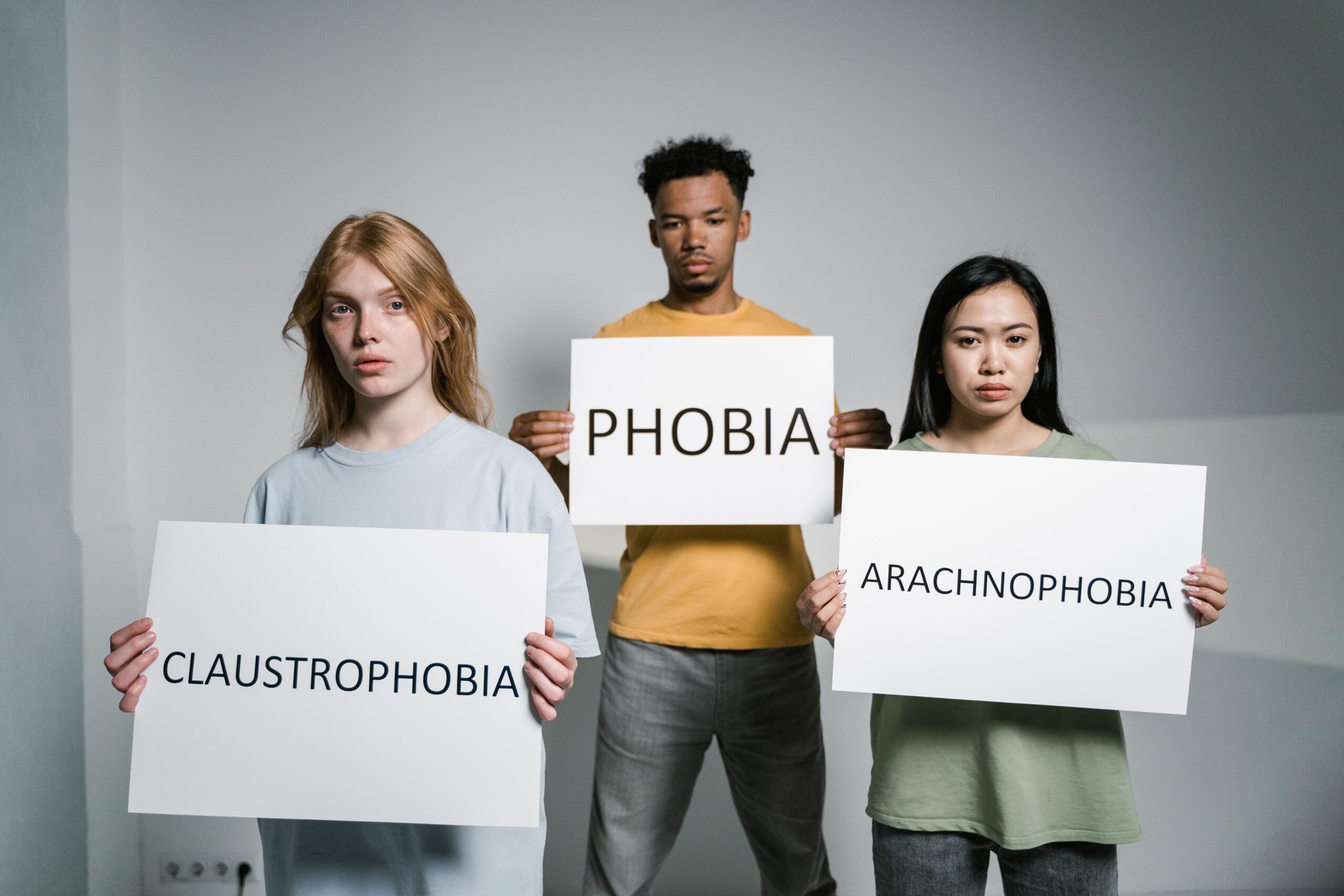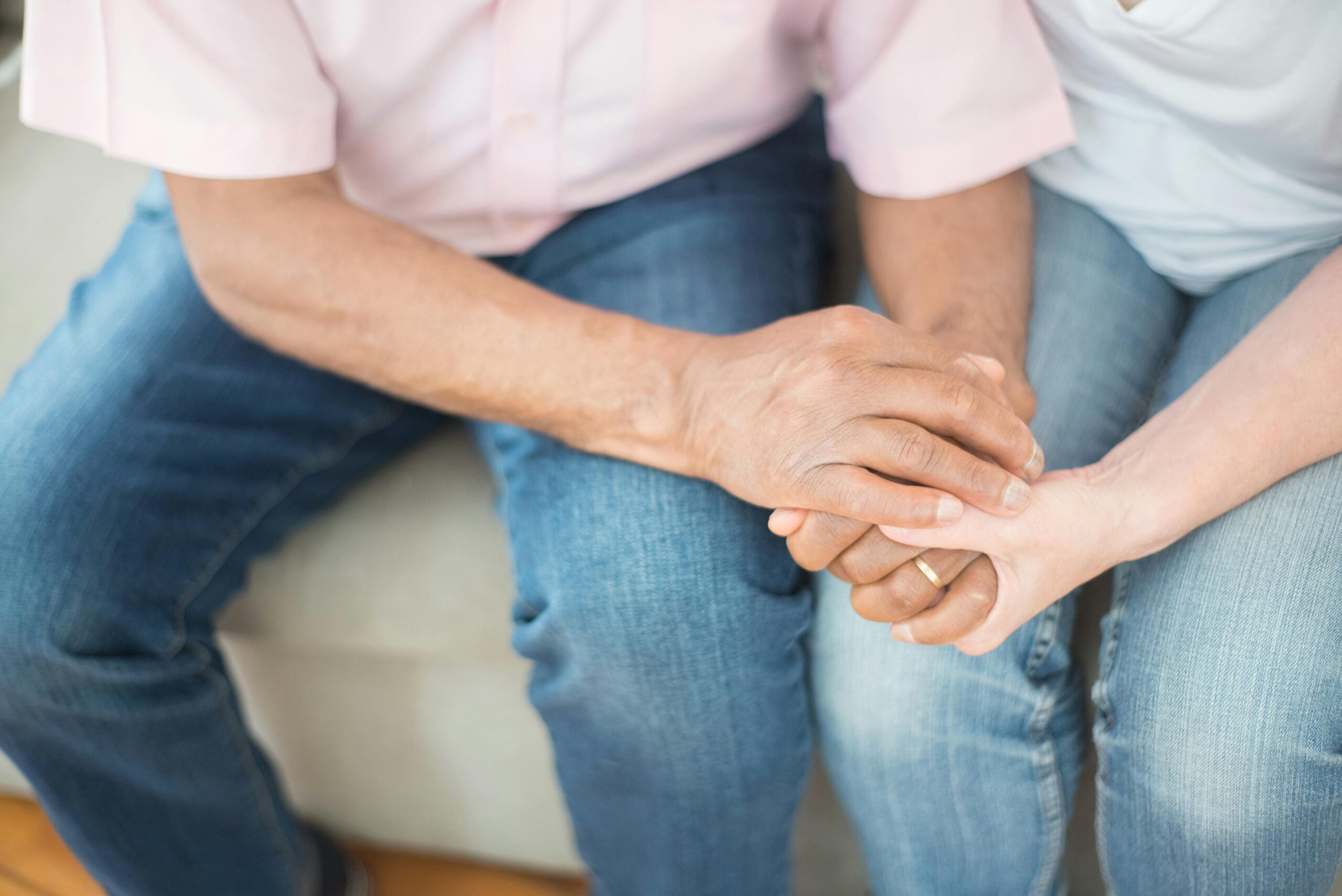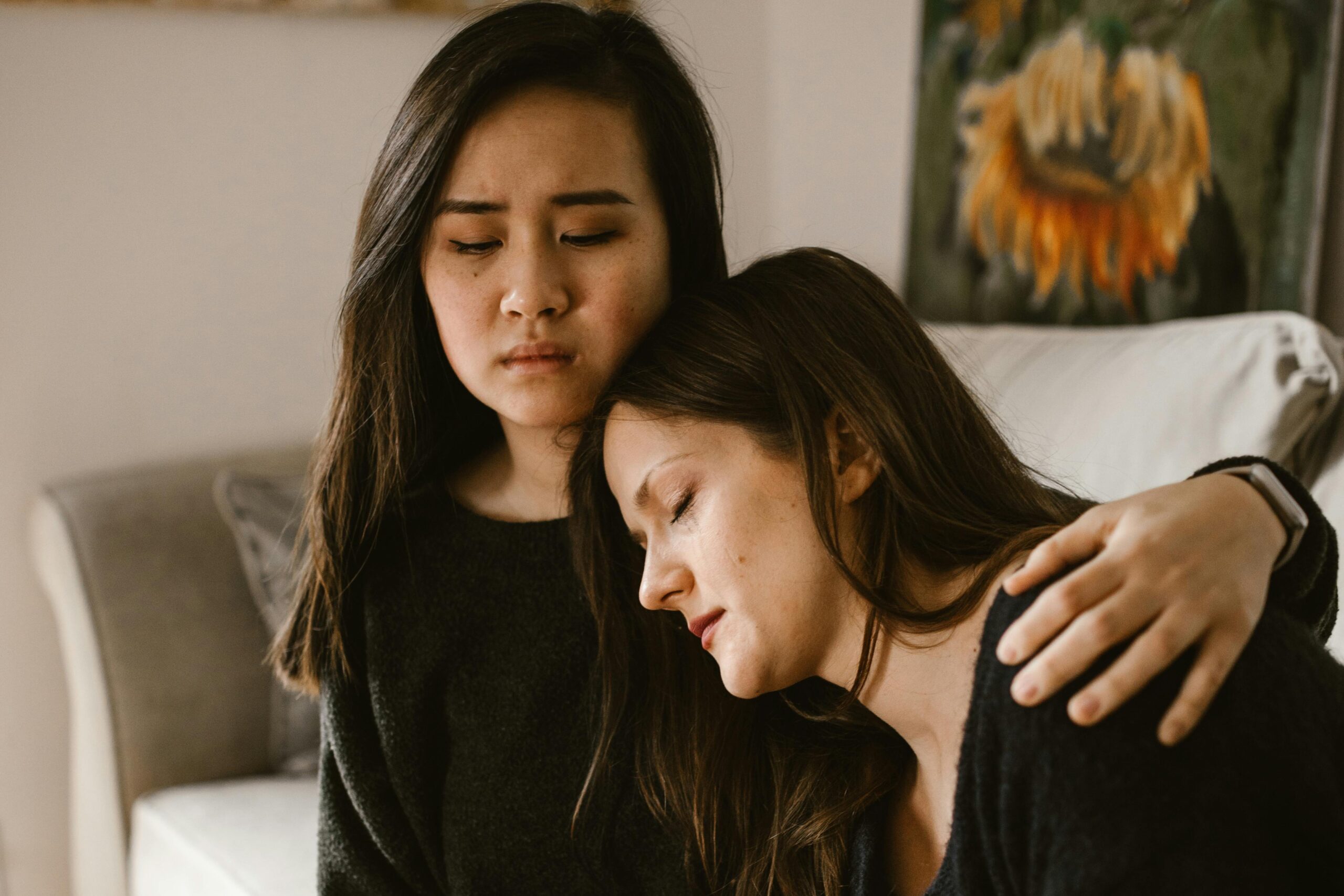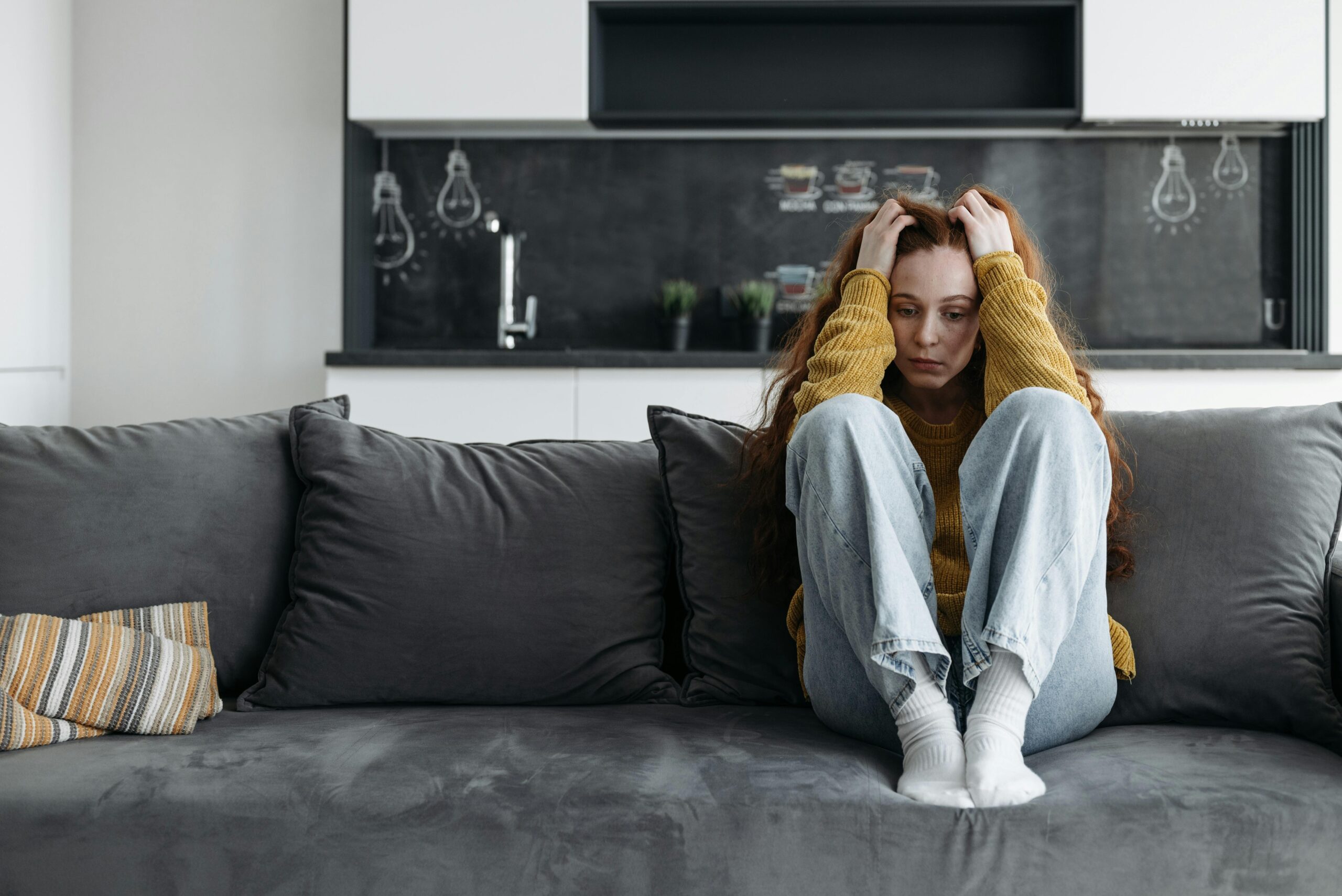
Confronting Phobias: Understanding, Coping, and Moving Forward
In the rich tapestry of human experience, fear is a universal thread. Everyone feels fear at one point or another, and it plays a crucial role in our survival by alerting us to potential dangers. However, when this fear becomes irrational, persistent, and disrupts our daily lives, it morphs into something more debilitating, known as a phobia.
━ What is a Phobia?
A phobia is an intense, irrational fear of something that, in reality, poses little or no actual danger. Unlike general fear, which may stem from a direct threat, phobias are characterized by excessive and persistent fear triggered by specific situations, objects, or activities. Phobias often lead to avoidance behaviors, where the person goes to great lengths to avoid the fear-inducing subject, causing significant distress and interference with their normal functioning.
➤ Common Phobias
Phobias vary widely, with over hundreds known to exist, but some are more common than others.
The top three most prevalent phobias include:
● Arachnophobia
The fear of spiders. It is estimated that up to one-third of women and a quarter of men in the United States experience this phobia to some degree.
● Ophidiophobia
The fear of snakes. This phobia affects approximately one-third of adults, and is believed to be evolutionary in nature, stemming from our ancestors’ need to avoid these potentially dangerous creatures.
● Acrophobia
The fear of heights. This phobia affects approximately one in five people, making it extremely common. Like ophidiophobia, it may have evolutionary roots, as heights can pose real danger.
➤ What Causes Someone to Have a Phobia?
Phobias can stem from a complex interplay of genetic, neurological, and environmental factors. Some individuals might be genetically predisposed to anxiety disorders, including phobias. Certain phobias like acrophobia and ophidiophobia might be evolutionarily ingrained in us as a protective mechanism.
A significant traumatic event, such as a near-drowning experience, could trigger a phobia of water (aquaphobia). Childhood experiences play a crucial role, too. For example, a child who has been bitten by a dog might develop cynophobia (a fear of dogs).
➤ Common Phobia Triggers
Phobia triggers can vary greatly depending on the specific type of phobia an individual has.
However, some common triggers associated with specific phobias include:
● Animals
This can include spiders (arachnophobia), dogs (cynophobia), snakes (ophidiophobia), rats (musophobia), birds (ornithophobia), and many more. Encountering these animals, or in some cases even images or mentions of these animals, can trigger intense fear.
● Natural Environment
This category includes phobias like fear of heights (acrophobia), fear of water (aquaphobia), fear of thunder and lightning (astraphobia), and fear of the dark (nyctophobia).
● Specific Situations
Some people may develop phobias to certain situations such as flying (aviophobia), driving (vehophobia), enclosed places (claustrophobia), bridges (gephyrophobia), or even going to the dentist (dentophobia).
● Blood-Injection-Injury
This type of phobia includes fear of blood (hemophobia), fear of injections and needles (trypanophobia), and fear of injury or invasive medical procedures.
● Other
There are also numerous other triggers for more unique and less common phobias. For instance, some individuals have a fear of clowns (coulrophobia), while others may fear balloons (globophobia).
The triggers for phobias can vary widely and are unique to each individual. Understanding and identifying these triggers is often an important first step in managing a phobia.
━ Is Having a Phobia a Bad Thing?
While it might seem odd to consider that there could be pros to having a phobia, it’s important to view this issue in a nuanced way. Indeed, phobias can lead to distressing symptoms and disrupt daily life, but understanding them can also offer insights into our psychology and even potentially drive personal growth.
Let’s explore both sides:
➤ Cons of Having a Phobia
● Impaired Quality of Life
Phobias can cause significant distress and can interfere with daily life. For instance, if you have agoraphobia (fear of open spaces or crowded places), it might limit where you can go, potentially restricting you from enjoying certain social activities or even performing necessary tasks like grocery shopping.
● Physical Discomfort
Phobias can trigger a physical response, such as sweating, rapid heart rate, trembling, and even panic attacks. These responses can be unpleasant and physically exhausting.
● Avoidance Behavior
Phobias often lead to avoidance behaviors. This means that people with phobias may go out of their way to avoid the things that trigger their fears, and this avoidance can significantly limit their activities and experiences.
● Increased Risk of Other Mental Health Disorders
People with phobias are at a higher risk of developing other mental health disorders, such as depression, other anxiety disorders, and substance abuse disorders.
➤ Pros of Having a Phobia
● Insight into Personal Psychology
Confronting a phobia can offer insight into personal fears and anxieties. Understanding these fears can be a valuable tool for self-discovery and growth.
● Motivation for Change and Growth
The desire to overcome a phobia can serve as a strong motivation for personal change. This might lead to seeking therapy, where you could learn valuable coping skills and mechanisms that could be applied to other areas of life as well.
● Enhanced Empathy and Understanding
Having a phobia can increase your empathy towards others dealing with their fears and anxieties, creating a deeper understanding and compassion for others’ experiences.
● Potential Protective Aspect
Some phobias might have a protective aspect. For example, a fear of dangerous animals or risky situations could indeed keep you safe. However, the fear response becomes problematic when it is out of proportion to the actual risk involved.
Overall, while phobias present significant challenges, they can also provide opportunities for personal growth and understanding. It’s essential to seek professional help if a phobia causes distress or interferes with daily life. Treatments are available and can greatly help in managing and potentially overcoming these intense fears.
━ Resources and Treatments Available
Thankfully, phobias are treatable, and many people can overcome their fears with professional help.
Here are a few commonly used treatment options:
➤ Cognitive Behavioral Therapy (CBT)
CBT is often the first line of treatment for phobias. This approach seeks to change the negative thought patterns that generate fear and replace them with more positive, realistic ones.
It often involves the following components:
● Cognitive Restructuring
This involves identifying irrational thoughts and beliefs about the phobic object or situation, challenging them, and replacing them with more realistic and balanced views.
● Behavioral Experiments
These experiments involve testing out the fearful beliefs in real life to demonstrate that the feared outcomes are unlikely to happen, which can help to disprove the irrational thoughts.
➤ Exposure Therapy
Exposure therapy is a specific type of CBT designed to reduce fear and anxiety responses to specific phobias. This is accomplished through repeated exposure to the feared object or situation in a safe and controlled environment.
There are several types:
● Systematic Desensitization
This involves slowly and progressively facing the phobic object or situation. The individual begins by imagining the fearful situation and then gradually faces it in real life.
● Flooding
This involves immediate and intense exposure to the phobia source. It’s typically faster but more stressful than systematic desensitization.
● Virtual Reality (VR) Exposure Therapy
This new form of exposure therapy uses VR technology to expose people to the source of their fears in a safe and controlled setting.
➤ Medication
While medication is not usually the primary treatment for specific phobias, it can be helpful in certain cases, particularly when used in conjunction with therapy.
Some commonly used medications include:
● Selective Serotonin Reuptake Inhibitors (SSRIs)
These drugs can help reduce symptoms of anxiety.
● Benzodiazepines
These sedatives can help people relax by reducing the amount of anxiety they feel.
● Beta-Blockers
These can help manage physical symptoms of anxiety, like a racing heart.
➤ Support Groups
Support groups offer a platform for people with similar issues to come together and share their experiences and coping strategies. Knowing that you are not alone in your struggle can be very reassuring. The Anxiety and Depression Association of America (ADAA) has an online support group where people can connect and share their experiences.
➤ Self-Help Techniques and Lifestyle Changes
Several self-help techniques and lifestyle changes can help manage symptoms of phobias:
● Regular Exercise
Regular physical activity can help reduce feelings of anxiety by boosting your mood and acting as a natural stress reliever.
● Healthy Diet
Certain foods may contribute to anxiety. Try to maintain a balanced diet with plenty of fruits, vegetables, lean proteins, and whole grains.
● Adequate Sleep
Poor sleep can contribute to anxiety. Try to establish regular sleep patterns and ensure you’re getting enough rest.
● Mindfulness and Relaxation Techniques
Practices such as meditation, yoga, and deep breathing can help relax the mind and manage symptoms of anxiety.
● Avoiding Caffeine
Caffeine can trigger anxiety and panic attacks. Try to limit your intake of caffeinated beverages, such as coffee, tea, and certain soft drinks.
➤ Professional Resources
There are many professional resources available to help individuals with phobias, such as psychologists, psychiatrists, and therapists specializing in anxiety disorders. These professionals can provide guidance, support, and treatment plans customized to the individual’s needs. Organizations such as the American Psychological Association (APA) and ADAA offer directories to help locate these professionals.
Remember, the most effective treatment varies from person to person. It often involves a combination of professional therapy, self-help techniques, lifestyle changes, and sometimes medication. It’s important to consult with a healthcare provider to create the best treatment plan for you.
━ Conclusion
Phobias can be a debilitating part of a person’s life, transforming otherwise mundane tasks or objects into sources of deep-seated fear and anxiety. Understanding the nature of these conditions, their causes, and the availability of various treatment options is the first step towards overcoming them. It’s important to remember that everyone’s experience with phobias is unique, and what works for one person might not work for another. Therefore, it is crucial to seek professional help for a tailored treatment plan. By doing so, people can reclaim control over their lives and no longer be defined by their fears.

Discover the Hardship Center, a valuable resource for understanding financial hardship programs available to the public. Learn how professional assistance can help maximize the benefits of these programs and make a significant difference in consumers’ lives.





